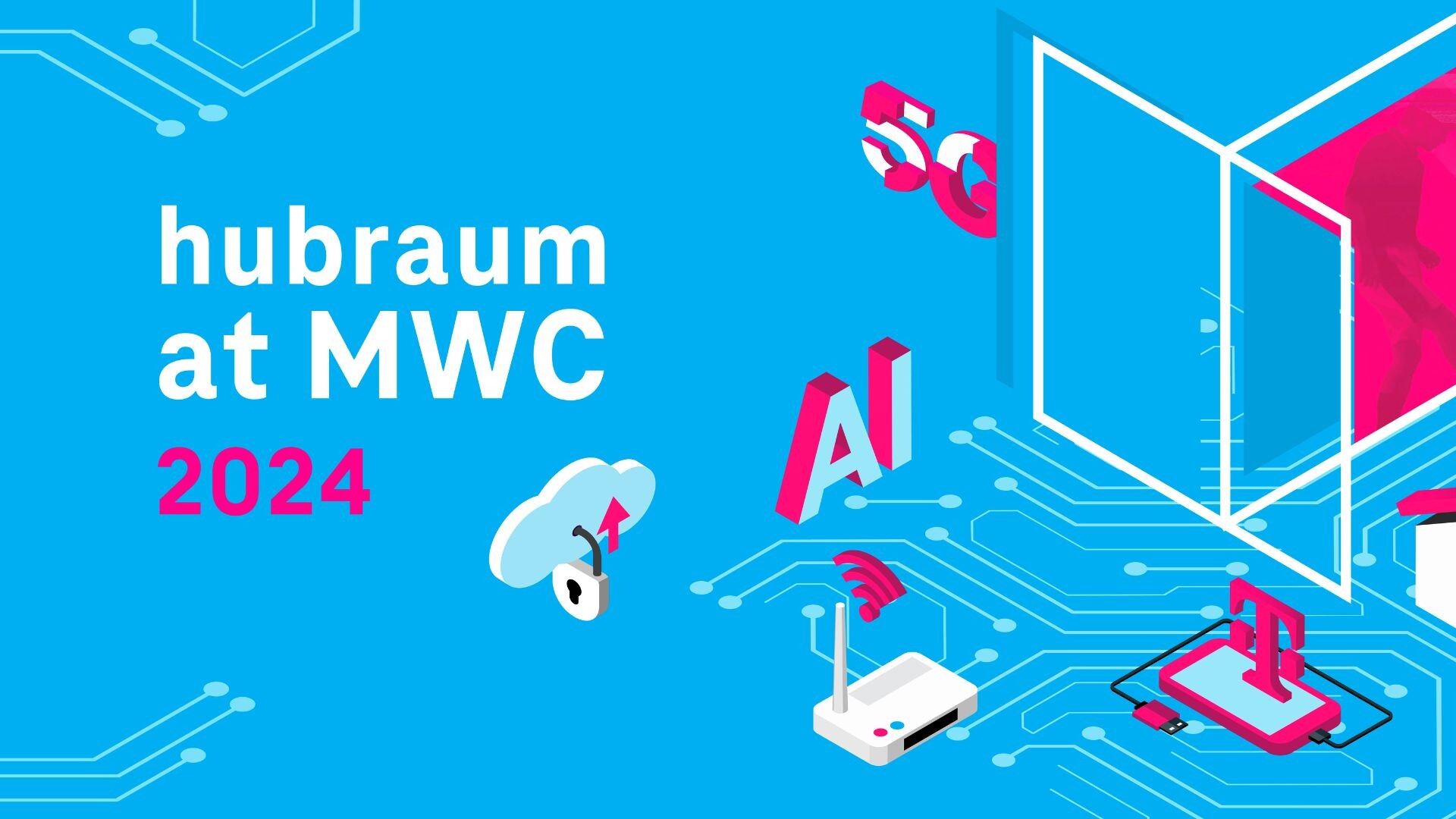
2700 visitors and a hat to help the blind see: hubraum visits MWC 2024
After a whirlwind trip to the 2024 Mobile World Congress in Barcelona, we’re ready to celebrate our wins.

With Deutsche Telekom’s 5G network roll-out nearly complete, the next step will be opening up its capabilities for third party developers to access. Up until now, Telekom has been expanding a 5G NSA (5G Non-Standalone) network, which means that at this time, the core network is still based on its predecessor, 4G. The connection, signal traffic and routing take place in this core network, in the so-called control layer running in the background. This said, the 5G NSA network already provides users with many new features such as considerably higher speed — at a 3.6 GHz frequency, more than one gigabit per second is possible! And these download rates also run over 5G when mobile surfing with 5G NSA — not over 4G. Where it says 5G, there is 5G inside.
In the upcoming next step of network evolution, 4G will no longer be required in the core network and the 5G network will become a Standalone network (5G SA). At this point, more of 5G’s inherent capabilities, such as network slicing, will become available. In network slicing, a network operator divides the network into virtual slices, each serving specific requirements. They are individually tailored to suit. Business customers in particular will benefit from these network slices. But private customers will benefit, too, with a separate network screen for gaming, for example. This will guarantee smooth gaming, even with its advanced requirements in terms of graphics.
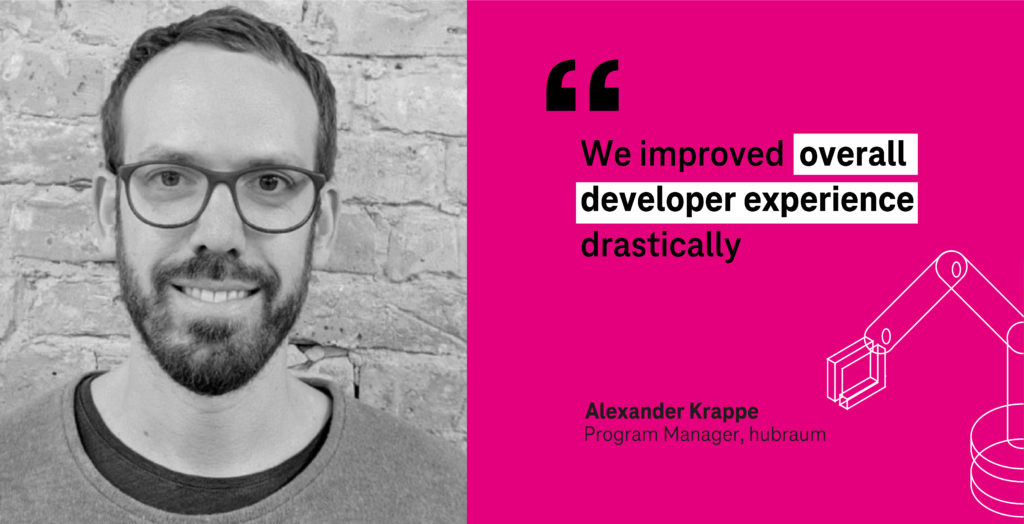
In short, 5G is the ultra-fast wireless network with the potential to connect everything and usher in the next great technology revolution. In order to help developers, startups, corporates and hyperscalers utilize these 5G capabilities, Telekom has developed an initial set of 5G APIs (Application Programming Interface). These 5G APIs can now be tested directly on a fully functional 5G standalone core network which we have built as a unique indoor and outdoor testbed at hubraum’s Berlin campus.
To validate the impact of our 5G APIs on third party APIs and apps, over the past few months we have set up a unique testbed at hubraum in Berlin. For optimal testing, we’ve provided application servers which are directly connected to the network and Deutsche Telekom’s edge clouds. An internet breakout integrated into the testbed is also available.
Our 5G APIs interact directly with our 5G Radio Access Network (RAN). They may allow information such as location, congestion or others to be obtained from the network, allowing users to configure network settings. These APIs, such as 5G Latency API, 5G QoS API or 5G Throughput API, can, for example, set the quality of service for a specific device or IP flow.
We first tested the infrastructure we built with a number of startups at the end of 2021, and doing so meant we learned a lot during this challenge. “We improved overall developer experience drastically — what do developers need to get onboarded or: is our documentation both sufficient and easy to understand? Also, we learned a lot about further requirements towards the network which we can use for future product roadmapping,” says program manager Alexander Krappe.
Now it’s time to welcome the first batch of developers who will participate in our 5G Early Access Program!
We’re delighted to announce that the first batch of participating startups in our 5G Early Access Program have been onboarded. We selected these companies from a number of applications. According to our own Developer Evangelist Mario Bodemann: “For this first batch we were looking for projects which deal with moving objects. If you look at the selection we made, you will see that these objects include drones, racing cars, and robots! The batch is completed by a company from the entertainment sector.”
Now the work can begin. Want to meet our startups? We’ll be introducing our fantastic partners in this ride in alphabetical order!
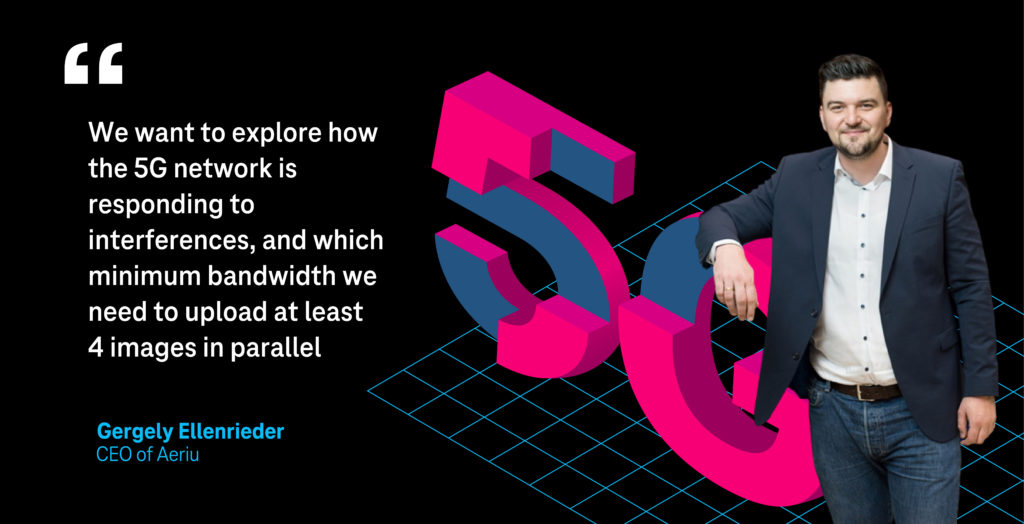
Aeriu Technology is a drone software company that helps warehouses speed up and reduce costs in their inventory management. Aeriu’s solution is easily scalable all around the globe and only requires a few days for its rollout.
Aeriu’s solution can replace at least half of your workforce and forklifts with drones to operate inventory management. The solution works with stock DJI drones, which can either be handled by company staff or drone pilots provided by Aeriu. The drones can automatically identify barcodes on pallets and upload the data to Aeriu’s inventory management system, a system that was developed to easily meet company policies and be integrated into ERP systems.
“We are going to take photos with our drones and test traffic to see how much uploading our images improves with 5G,” explains Gergely Ellenrieder, CEO of Aeriu. “We want to explore how the 5G network is responding to interferences, and which minimum bandwidth we need to upload at least four images in parallel.”
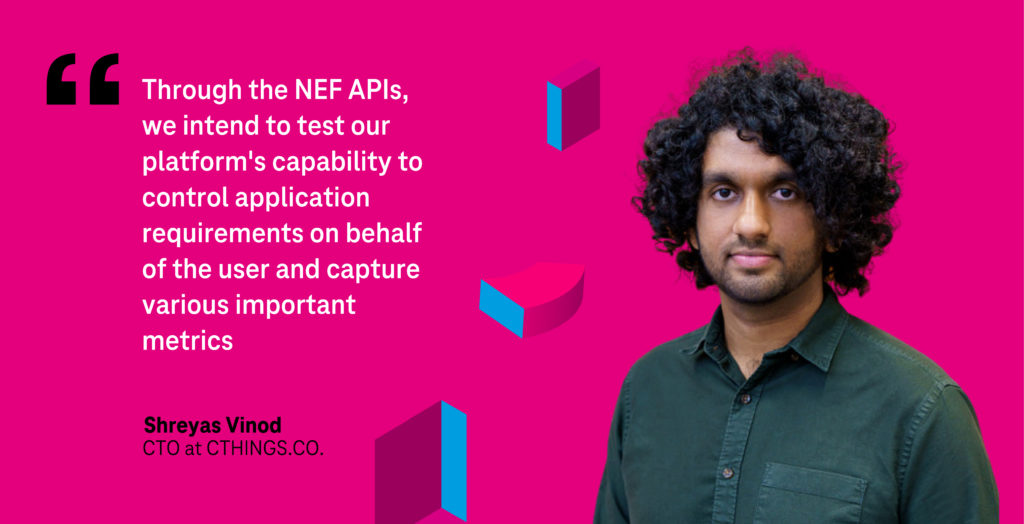
CTHINGS.CO is a Polish-Austrian startup which develops hardware and software for 5G IoT solutions. We create building blocks that allow enterprises, integrators, and telco operators to leverage the promise of 5G into a commitment to efficiency and better decisions. Amongst their goals for the tests, CTHINGS.CO hopes to move away from the need to use the API from the user perspective by allowing them to choose an application and far-edge compute target through its Orchestration Platform, which will, in turn, automatically communicate with Network Exposure Function (NEF) APIs to improve performance.
CTHINGS.CO also wants to utilize new metrics collection capabilities on its Orchestration Platform to collect key indicators (latency, jitter, bandwidth, specific protocol performance, etc.) and visualize this information while testing various modes made available to them through the NEF APIs. Finally, CTHINGS.CO intends to test its hybrid cloud deployment scenario through its Orchestration Platform to enable field IoT use cases, and to test its microservice delivery system through Orchestra in the form.
“The 5G Early Access Program will play a big role in our quest towards building a solution that opens IoT to the masses. We envision our Orchestration solution as an umbrella platform that empowers users to build off IoT solutions – be it a temperature sensor or massive far-edge deployments. This program allows us to test our systems and their impact on performance and ease of use, both key factors for our customers. Through the NEF APIs, we intend to test our platform’s capability to control application requirements on behalf of the user and capture various important metrics,” explains Shreyas Vinod, CTO at CTHINGS.CO.
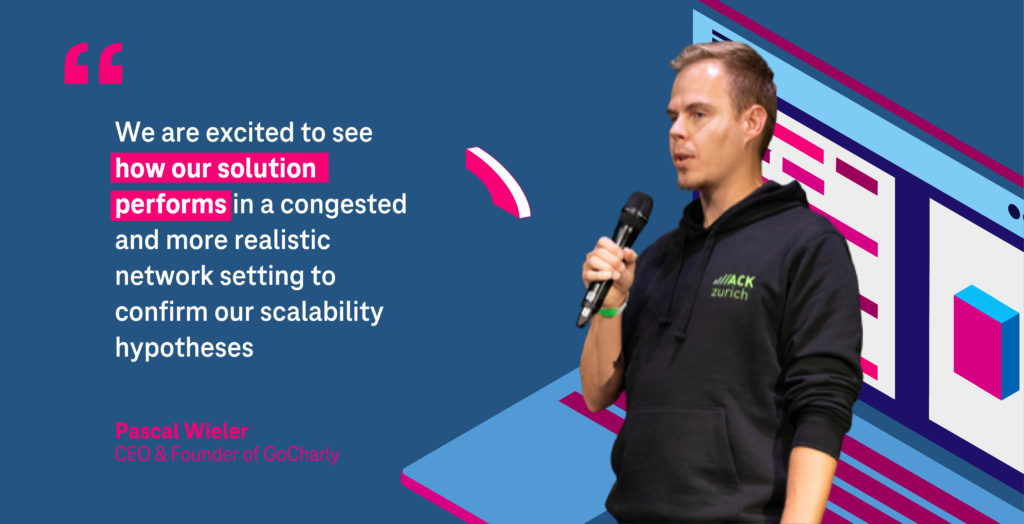
GoCharly provides On-Demand Delivery in urban environments and uses teleoperated delivery robots instead of traditional human couriers. That’s why having access to ultra-low latency connectivity is a crucial element for their daily operations to make sure that all food, grocery and other deliveries can arrive safely and on time at your doorstep — at all times! Improving and dynamically adjusting connection quality using the 5G network APIs and being able to adopt and test this new technology at an early stage can be a key differentiator for GoCharly in contrast to its competitors.
“We expect a significantly improved driving experience for our teleoperators, a more stable connection, and fewer connectivity issues along the way. We are also excited to see how our solution performs in a congested and more realistic network setting to confirm our scalability hypotheses,” comments Pascal Wieler, CEO & Founder of GoCharly.
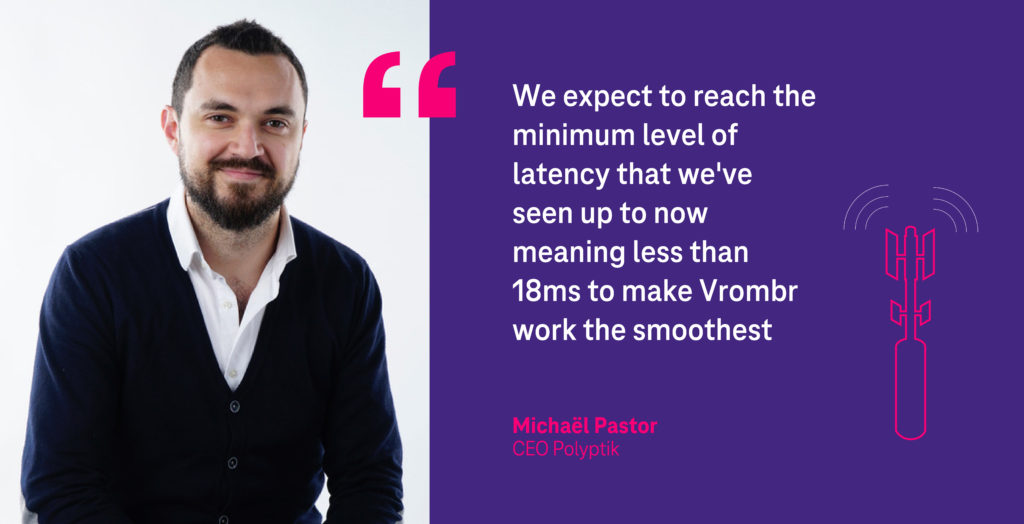
Polyptik develops Vrombr, the first Remote Reality Racing Game for smartphone, based on 5G low latency. Vrombr provides a unique user experience as the game is governed by the laws of physics and mechanics, which ensures you’ll have lots of fun while driving a real car thousands of kilometers away. Ultimately, Vrombr aims to decarbonate car racing.
In the 5G test, Vrombr therefore highlights 5G low latency. For instance, if the latency is too high, you may turn too late, crashing into the track’s fences. Latency is one of Vrombr’s biggest focuses and they will test the different configurations that the API allows to ensure they have the best possible latency.
“We expect to reach the minimum level of latency that we’ve seen up to now, meaning less than 18ms to make Vrombr work as smoothly as possible. We are really looking forward to the testbed week!”, Polyptik’s CEO Michaël Pastor told us.

Volucap operates the world-leading volumetric capture studio in Potsdam-Babelsberg, where things and people can be captured both spatially and in motion. People and objects are scanned three-dimensionally, ensuring a lifelike effect. Eventually, filmed subjects can be placed into any AR, MR, VR, 360, or 2D video/web application on a variety of devices— such as phones, holographic headsets, and Windows Mixed Reality Immersive Headsets.
In the 5G testbed at hubraum, Volucap will test several simulation scenarios — what will happen if you have multiple devices in the network, or single devices, how can you optimize the metric structure and the data bandwidth to provide higher quality of the images? Transmitting the volumetric data of real humans requires a very high quality of images, which is why Volucap is keen on testing Deutsche Telekom’s 5G APIs bandwidth optimization capabilities.
“Immediate access to Deutsche Telekom’s latest 5G technologies is the most important enabler for making mobile entertainment content spatially explorable in the future”, comments Sven Bliedung von der Heide, CEO of Volucap.
The participating startups are going to set-up and test their solutions in our testbed in Berlin – stay tuned for our updates on the results!
If you’re also interested in participating our 5G Early Access Program, don’t hesitate to apply for the program!